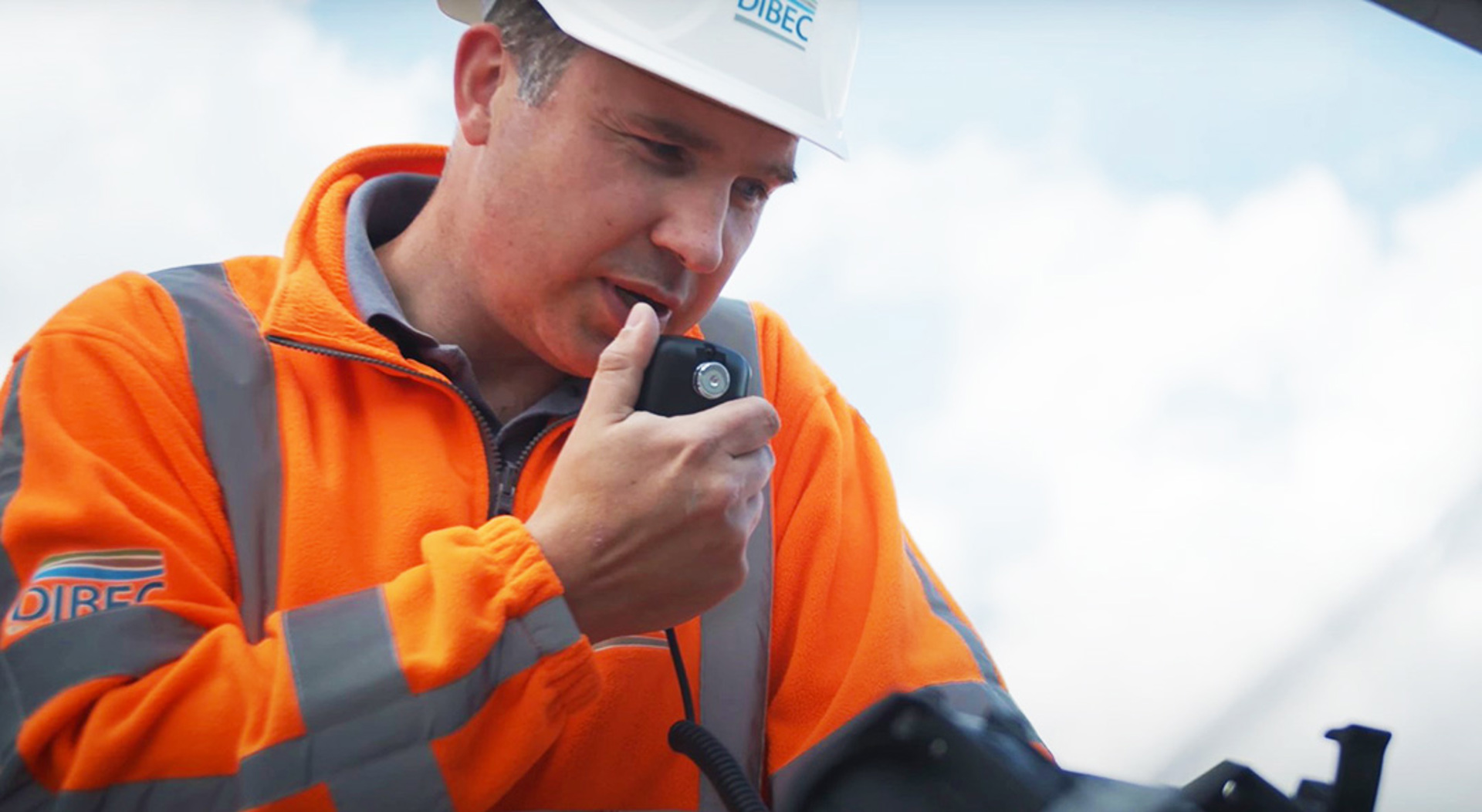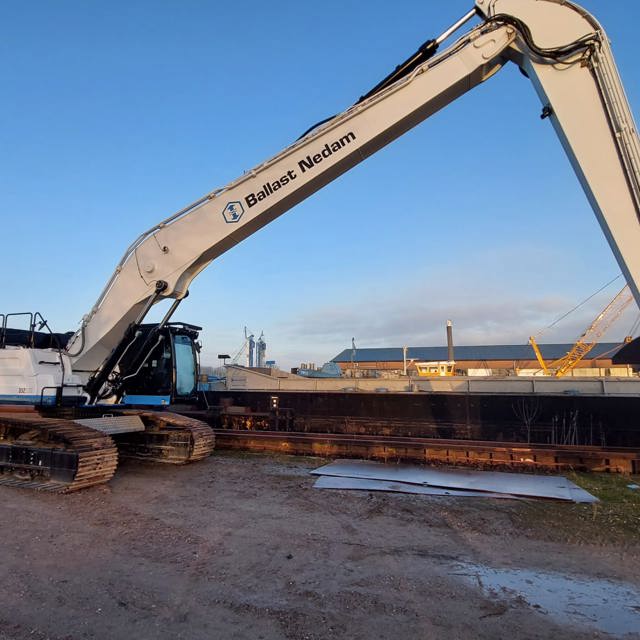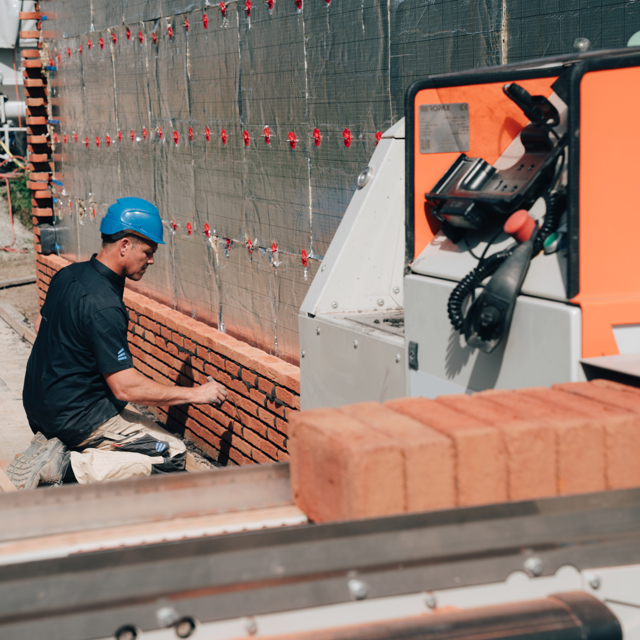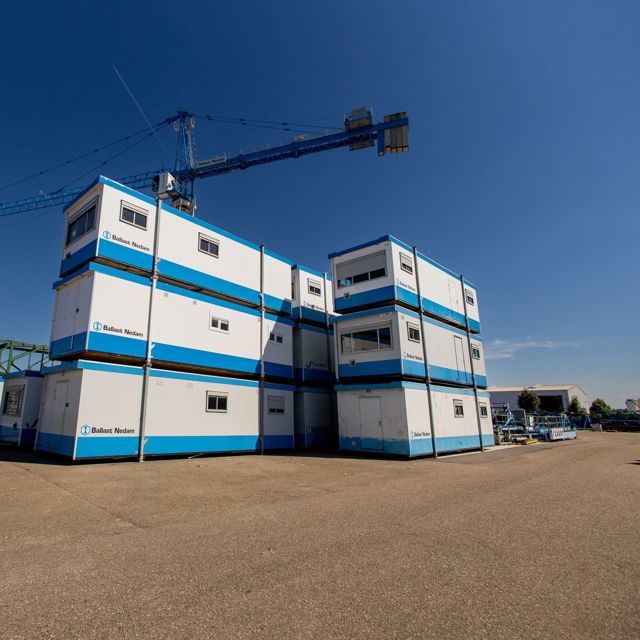Robots in construction: how does that work?
Ranging from bricklaying robots to drone measuring machines, robotisation in the construction sector offers plenty of opportunities. The robots strengthen our teams and even contribute to sustainable construction. How does that work?
Ballast Nedam is already investing heavily in this development. Three examples:
- In 2021, we drilled 280,000 cuttings and brackets into the underwater concrete floor of the Maas Delta Tunnel and the Holland Tunnel. This job was done by a robot plotter.
- In May 2022, we announced that we would start using a new bricklaying robot. This robot works with real brickwork, instead of the stone strips that most robots use.
- Two of our own colleagues have now been trained as drone pilots. They have the highest drone certificates in the Netherlands and can therefore take measurements in an intelligent manner.
What is robotisation in the construction sector?
Robotisation means that machines perform tasks that were previously done by people. We call these machines robots. The actions are programmable, often repetitive in nature and can be controlled automatically.
There are various types of robots in construction, such as the bricklaying robot and drones mentioned earlier, but also 3D concrete printers or autonomous excavators. Because the machines are flexible, we can use them for multiple purposes. For example, we can use a drone to check the safety or progress of a project or take a photo for a client.
Why are we investing in robots on construction sites?
Robots are increasingly being added to teams because they work in a reliable, efficient and fast manner and can take away heavy labour. They support the operational process. This is no superfluous luxury, given the gigantic construction task, the demand for further sustainability and the risk of failure costs.
Robotisation also helps to make the sector more sustainable, because the right quantities of required raw materials can be set in advance, for example in the case of a bricklaying robot or a 3D concrete printer, and material savings can be achieved. 3D printers, for example, can create lighter designs that are just as sturdy at the same time. The bricklaying robot used by Ballast Nedam reduces mortar consumption by 30-50% and substantially cuts CO2 and NO2 emissions.
Will our own colleagues be replaced by robots in the future?
We can be very brief about this: no, our colleagues are irreplaceable. But robots do work very efficiently: a bricklaying robot with a trained operator does as much work as three human bricklayers. With this efficiency, the robots support our colleagues. It prevents our scarce bricklayers from being physically overburdened in today's tight labour market.
This development creates a cooperation between humans and machines. An example: the robot plotter makes work on the A24 Blankenburg connection easier because this device lays out steering lines and drills holes by itself. And thanks to the drone, our colleagues save time when taking measurements.
In this video you can see how our colleagues on the A24 Blankenburg project work together with a drone:

Using a drone for measurements
Watch videoWhat are we planning to do with the bricklaying robot?
The bricklaying robot will be laying bricks for projects for two Ballast Nedam subsidiaries: Heddes Bouw & Ontwikkeling and Laudy Bouw & Ontwikkeling. We are testing the robot extensively and will start using it after the summer of 2022.
How do we see the future of robotisation in the construction sector?
The digitalisation of the construction sector offers plenty of opportunities. Not only for us, but also for our clients. Through innovation and digitalisation, we can bring our clients into our construction process.
With digitalisation, we can improve efficiency, increase quality and production, fill the labour gap and, at the same time, increase our attractiveness to young talent. We believe that the digital transformation is far from finished. That is why we are embedding digitalisation in our processes. Through pilots, we are gaining knowledge and experience, after which we can apply the results.
We do still see challenges, for example, around the standardisation of production processes or the differences between design and realisation. The enormous construction task and labour shortage encourage us to look for solutions and challenge ourselves to take a broader view. This is how we continue to invest in robotisation.





